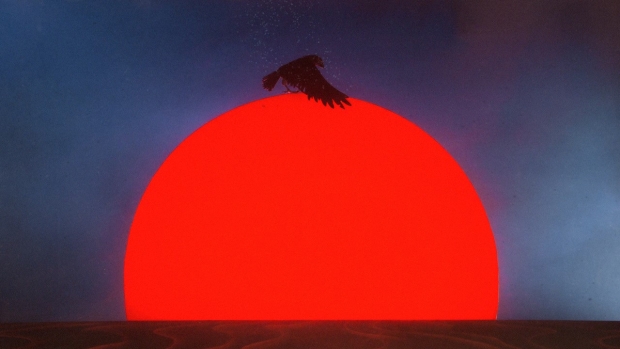Director Sean Pecknold used hand-crafted stop-motion animation and a multiplane camera to capture a young hawk’s struggle to fly with a broken wing; short premiered September 21 at a GRAMMY Museum retrospective featuring band frontman Robin Pecknold.
For Fleet Foxes’ latest single “Featherweight,” director Sean Pecknold used stop-motion animation and a multiplane camera to craft an evocative and visually striking music video about a young hawk as he struggles to fly with a broken wing. It shows the bird’s successes and failures, and the second chances that life will sometimes offer – even when all seems lost.
The video premiered September 21 at the GRAMMY Museum as part of a retrospective featuring Fleet Foxes’ music videos with a conversation between Sean and his brother, band frontman Robin Pecknold.
Since 2008, Pecknold has crafted the visual narrative behind Fleet Foxes' songs, frequently shifting between stop-frame animation and live-action.
Watch his latest effort here:
“When I made the first Fleet Foxes video using clay stop-motion, I fell in love with the tactile quality of the technique and never looked back,” shared Pecknold “There is something really special about creating animations in the real world. The process is more physical and more immediate than clicking away at a mouse and getting red-eyed.”
When concepting each music video, the director is not only influenced by the lyrics, but the “visual shape” that he imagines as he listens.
“I’ll play the song on repeat for a few days, and then see what images linger in my mind,” he continued. “When I brought [‘Featherweight’] in and started listening to the stems, I was kind of able to see the song in a new way. Listening to the texture and tone of these individual tracks – actually hearing the layers that went into the song – was a nice exercise for me to think about the layers of the pictures.”
To bring “Featherweight” to life, Pecknold joined forces with noted animator Eileen Kohlhepp (Robot Chicken, Anomalisa). “Eileen has an incredible attention to detail and ended up bringing the characters to life in a way I could never have done by myself,” he noted.
"I've long admired the way he has been able to use animation to create complex and beautiful worlds in a deceptively simple and thoughtful way,” commented Kohlhepp on working with Pecknold.
The project also allowed Pecknold to continue his collaboration with Toronto-based artist Sean Lewis, whose character designs and landscapes are fundamental to the world of the short film.
“I first discovered the work of Sean Lewis when he illustrated one of the first Fleet Foxes t-shirts in 2008,” noted Pecknold. “We had a chance to team up in 2020 to create concept art for a feature length animation I’ve been working on. The experience on that project was so wonderful that I wanted to take the collaboration to the next level with the ‘Featherweight’ animation.”
“Featherweight” is not the first time Pecknold has combined stop-motion animation with multi-plane down-shooting for a music video. The award-winning music video for “The Shrine / An Argument” also used a multi-plane camera.
“I had seen the [multi-plane] technique in early Disney films like Bambi and Pinocchio, then later when I discovered Lotte Reiniger’s and Yuri Norstein’s films. I’m very drawn to the texture, depth-of-field and parallax inherent in the technique,” he added.
Check out an informative behind-the-scenes documentary to learn more about the production process.
“I think we all go through these journeys where we feel like we’re broken but we keep pushing forward,” shared Kohlhepp. “When [the hawk]’s at the point where he’s the most exhausted and he’s almost given up is when he allows someone else to help him so he can continue on. It’s good to be open to the help of others, because we can’t do it by ourselves. In my 20 years as an animator, it's been an extremely rare opportunity to work on a project as poetic as ‘Featherweight.’”














